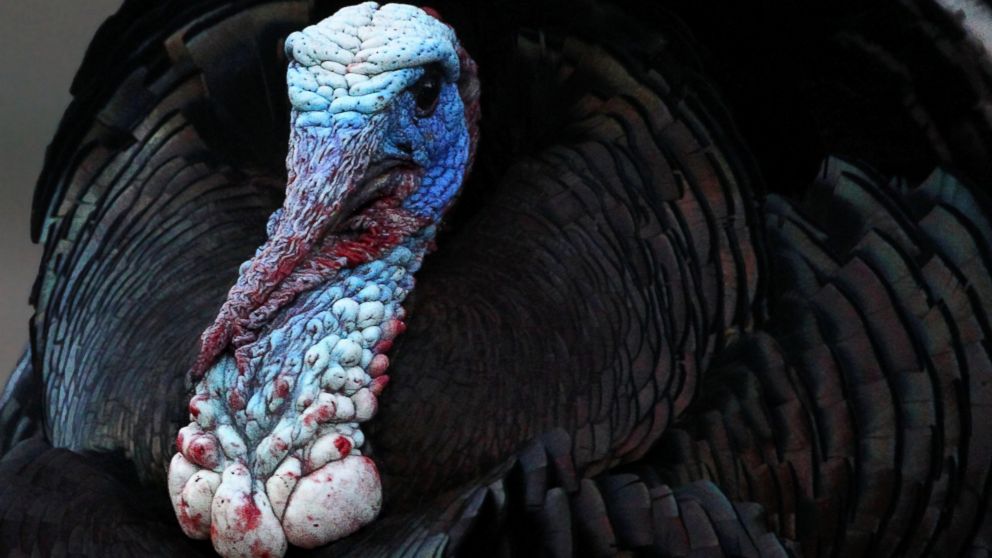Feathered Menace: Wild Turkeys Threatening Suburbia
These wild birds are tough customers, so don't show weakness, says one expert.

Nov. 18, 2013 -- They chase and frighten people, block roads and cause motorcyclists and bicyclists to crash--sometimes fatally. Then, adding insult to injury, they poop on your lawn.
They are wild turkeys—the birds Ben Franklin so admired that he wanted them to be America's national symbol, rather than the eagle. Oh, if Ben could only see them now.
Wildlife officials in virtually every state tell the same tale: Decades ago, wild turkeys were an endangered novelty. Then, partly due to the efforts of state wildlife departments to save them, they got a leg up. Now, by one estimate, there are in excess of 6 million of them nationally.
Boston Magazine reports that in the city's suburbs turkeys "strut around in gangs." In recent years, says the magazine, "ill-tempered turkeys have attacked cars, cops and plate-glass windows with disastrous results."
Aggressive turkeys menace Massachusetts neighborhood
Dave Scarpitti, a wildlife biologist for Massachusetts Division of Fisheries & Wildlife ("I guess you could call me coordinator of all things turkey," he tells ABC News), says birds in the wild were taken to new wilderness locations to breed. "They have expanded beyond what we ever would have thought. They are versatile, adaptive and very successful at breeding. Thirty years ago, fish and wildlife departments never expected turkeys would proliferate to the point that they're invading populated areas."
It's when a group of turkeys (a "rafter," in wildlife parlance) invade a town or suburb that interspecies conflicts arise and feathers start to fly.
These are not the kind of turkeys one finds inside a Swanson dinner. The males ("toms") are formidable creatures that stand 4 feet tall and weigh 25 pounds. Wingspans measure 6 feet. They have bony, knifelike spurs above their ankles, the better to carve up an opponent, including you. They're smart and learn from experience.
Their intelligence helps determine their stance toward humans, says Scarpitti: A bird that tries to intimidate a human being and succeeds will then be more likely to try intimidation again. For that reason, Scarpitti advises that if you're strolling down a sidewalk and encounter an aggressive tom who declines to move, you should show him who's boss.
Do not back down; do not walk around the bird. Confront it directly, he advises; yell, wave your arms, shoo it out of your way. Whatever you do, don't turn and run. The turkey will interpret that for what it is--proof that you are weak—and will chase you.
Or peck you--hard. "There's a hierarchy among turkeys," says Scarpitti, "a pecking order of sorts: birds peck each other to assert their dominance."
They can peck hard enough to break glass: A turkey that sees itself reflected in a window will peck the window, believing it to be another bird. It's rare, says Scarpitti, for a bird to break a window. "But they're capable of it, if they got a running go at it."
Thanksgiving dinner for rescued turkeys
The Milwaukee Journal Sentinel reports that last year a rafter of wild turkeys tried muscling its way onto a schoolyard in Glendale, Wis. At the Parkway Elementary School, teachers and staff had to defend students from an aggressive male who tried to chase the children. He stood around the school's front door and refused to move. "We chased him off with a red chair," the school's principal told the paper.
In the San Francisco Bay Area, a Benicia bicyclist died from injuries sustained in a crash when a flock of turkeys ran in front of him, according to the Vallejo Times Herald. The paper also reports that a motorcyclist crashed but survived when a turkey flew into him (they can fly, say wildlife experts at up to 55 miles an hour).
Dramatic as these examples may be, says Scarpitti, damage inflicted by turkeys more often takes the form of gardens rooted up or despoiled by droppings.




